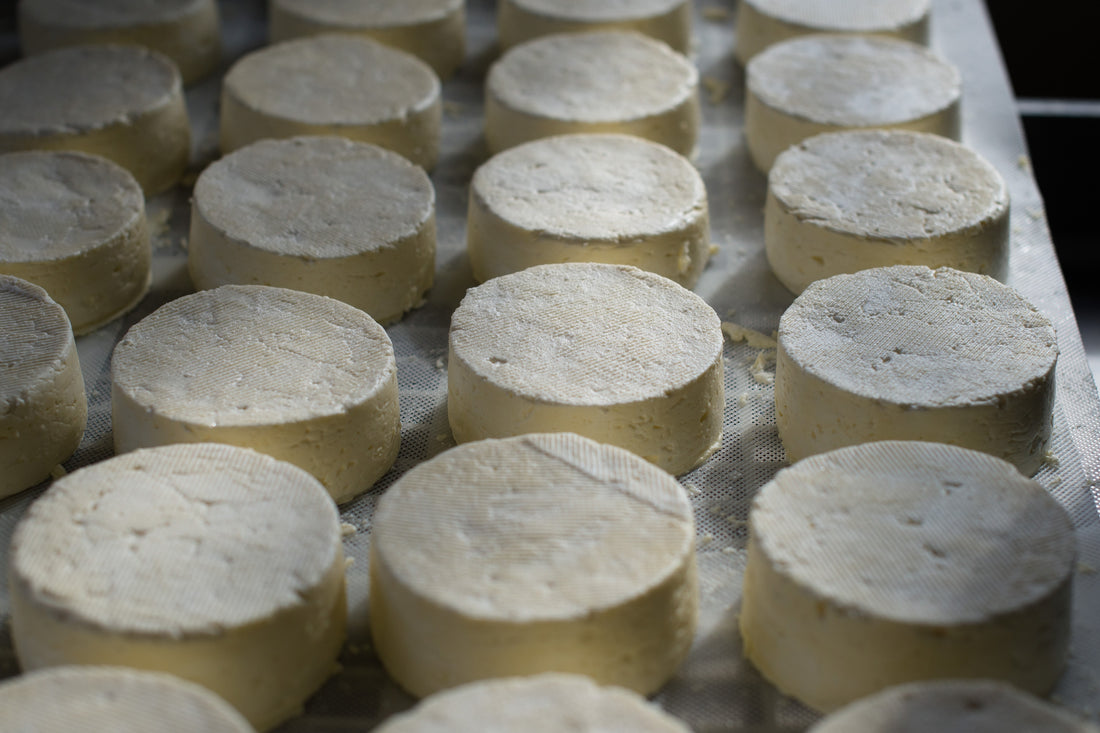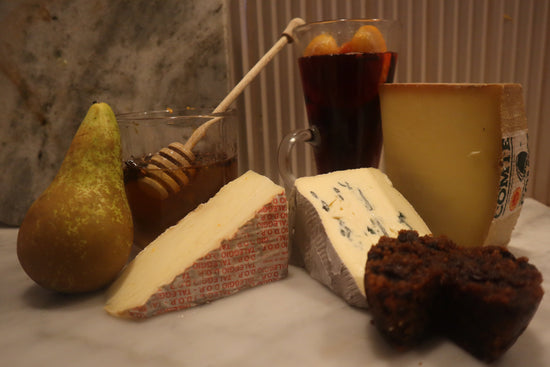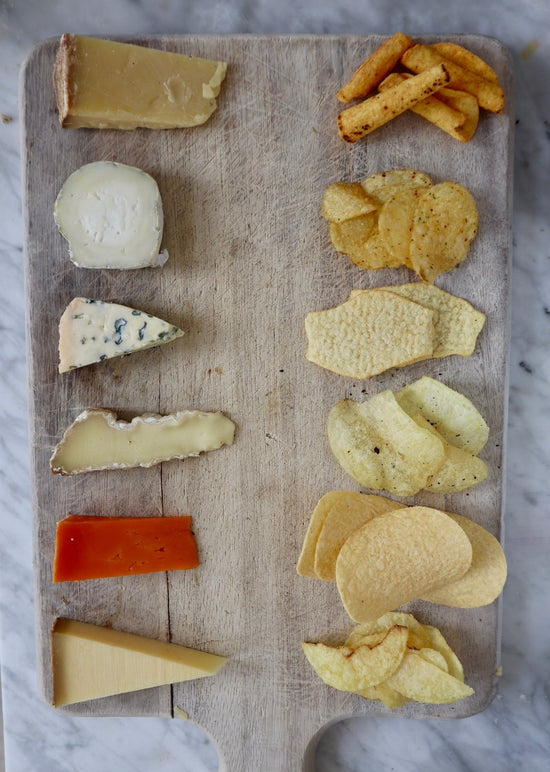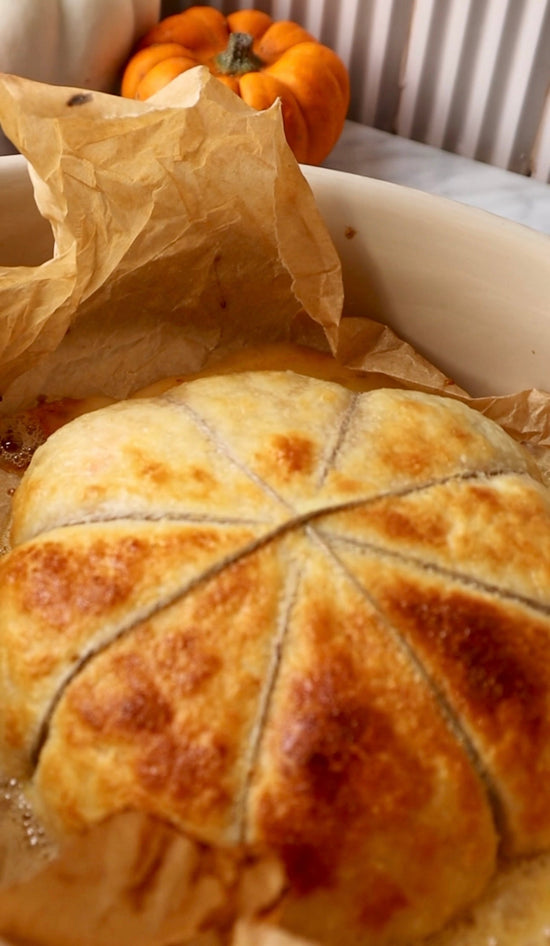How is cheese made?
Like many others, I like to know where my food comes from, and when you make cheese at home you get to witness every step of the cheese-making process. Not only do you get beautiful cheese and a sense of accomplishment from making your own cheese, but homemade cheeses are free from the typical chemical stabilizers and colourings used in many supermarket cheeses.
As you begin making cheese as home, you'll quickly realise some batches turn out well and others less so, the trick is to stick at it. Cheesemaking is a learning curve, and you will experience successes and failures. Yet it is a pursuit filled with endless potential: you can make anything from basic cheeses to shop worthy artisanal cheeses.
Let's start by looking at where the world got it's first cheese from
THE HISTORY OF CHEESEMAKING
How and when was cheese first made? The history of cheesemaking is fascinating. The original cheese dates back around 5,000 years and was first created by a wonderful accident: cattle herdsmen would transport the milk they collected in leather bottles and pouches created from the skin and organs of their cattle, and rennet, an enzyme found inside a calves stomachs, reacted with the milk and caused it to curdle, leaving the herdsmen with the first recorded cheese.
The development of the first blue cheese was, too, a happy accident. Legend has it that a French shepherd left his cheese safely in a cave whilst in pursuit of a lady, and when he later returned (probably without the lady, who knows) he found the cheese had formed mould. Not put off by this he tasted it anyway, and found it to be even more delicious that the original, non-mouldy cheese. Although this story is a bit fanciful, never the less it has its place in history - certainly the way the blue cheese was formed in the story could well have yielded a delicious mould. In the right climate blue mould is abundant in the air and grows rapidly under certain conditions, so the natural blueing of the cheese was a result of the environment it was left in, in this example a cave.
The features of certain cheeses also give a little insight into our history. For example, at first glance a Valençay cheese (an ash-coated goat’s cheese), is a beautiful French goat’s cheese. However, it used to be served as a perfect pyramid shape with a pointed top. When Napoleon returned defeated from a disastrous campaign in Egypt, he stopped at the castle at Valençay, and their local cheese apparently aroused such unpleasant memories that it is believed he cut the top off in fury with his sword, leaving the flat-topped shape that survives to the present day.
So could you be the next one to discover or create a new cheese by accident...?

Becoming a cheesemaker
I was inspired to start making cheese at home after my job as a cheesemonger took me all over the world, visiting my suppliers and witnessing the interesting ways in which they make their incredible cheeses. Each one uses a different and original technique, some revolutionary, based on modern techniques and sciences and others passed down through many generations.
I love the way this craft was born from something quite simple, to go on to be used all over the world, by so many different people from different walks of life, all united by cheesemaking.
Every culture in the world has its own cheese, all made following a similar principle, which suggests a common ancestry. Even countries such as China, not known for its dairy products, has its own type of cheese called Bai, an Asian semi-soft cheese. And then there is the more unusual queso blanco from South America. Yet it was in Europe that a large variety of cheeses were developed, many of which have become our cheeseboard favourites today.
There are thought to be 2,000 varieties of cheese being produced across the world. And now the trend is entering our homes too, with more and more people are trying to make their own cheese without setting foot on a farm or getting down and dirty to milking a cow.

CHEESEMAKING AT HOME
My first book - The Modern Cheesemaker - is for anyone who would like to make cheese at home for their own use, and learn about the art of cheesemaking. I find making cheese a calming, satisfying exercise, great fun and very therapeutic. And it's only through making cheese at home that I've developed a strong appreciation for the effort that goes into all the beautiful cheeses I have been selling in my shop for years.
I've structured the book in such a way that you can progressively build your cheesemaking knowledge and skills. I start by making the easiest fresh cheeses, and build complexity from there. I found that starting simple and developing my skills meant that I was able to progress in small and manageable steps. So if you are a beginner I would encourage you to do the same.
With each cheese you make, you will want to adjust and rework the recipe in your own way as you develop your skills, learn from the batch and gain a better understanding of the cheesemaking process.

Making Cheese
Since cheesemaking started around 5,000 years ago, the process has advanced, evolved and refined, but even so cheese is still made based on a simple technique and four very important and essential ingredients: milk, a starter culture, rennet and salt.
How do we make Cheese?
1. Milk is heated, then a starter culture added to acidify the milk. This acts on the milk sugar (lactose), converting it to lactic acid, effectively souring it.
2. Rennet or a vegetarian alternative is then added to this, causing the milk protein to curdle, thus forming cheese curds (solids).
3. The next step is to separate the curds from the whey (liquids). Once drained, the curds will then be stirred, drained and salted, and finally moulded or pressed to create the cheese.
This is the first stage of creating a basic cheese.
The processes you follow in these initial stages of cheesemaking determine what type of cheese will result – for example, when making soft cheese you would cut the cheese curds lightly and softly, whereas for a hard cheese you would cut the curds finely.
Once the cheese is in its mould, the final stage is ripening the cheese, which is when the cheese starts to develop flavour, texture and taste. Again, this is dependent on how and where the cheese is kept, the temperature and humidity – all these elements play a huge part in creating a cheese’s characteristics. Subtle changes in the process result in a varied end product.

What ingredients are used to make cheese?
Cheesemaking, in the most basic terms, is the simple process of separating the milk solids (curd) from the milk water (whey). It requires
only a few key ingredients, so the quality of these ingredients is essential to the finished product.
MILK
You won't be surprised to learn that milk is the most important ingredient in cheese making, whether it’s from a cow (the most common), goat, sheep, buffalo, reindeer, moose, or even yak - the methods for making cheese may vary, but cheesemaking will always start with milk.
We often forget that milk is a miracle food, a life-giving substance that contains essential nutrients for infants, whether a human baby or a young calf. Every mammal on earth owes its life to milk. It has all the nourishment needed to sustain life, grow an immune system and bones and provide energy.
Milk contains water, proteins, minerals, lactose, milk fat, vitamins and milk solids. Ideally, you should be using the freshest milk you can get, direct from a good dairy farm, but if you are like me and live in the middle of the city that isn’t always possible. Yet if you have a good farmers’ market locally, this is perfect, and will give you a chance to talk to the farmer about where their milk comes from, about the animals producing the milk, the way they are kept, and any other advice you may need.
COW’S MILK
Cow’s milk will probably be the most familiar to you, as it is the most affordable and readily available milk in the UK and across the world. Cow’s milk is 88% water, 5% lactose (milk sugar), 3.5–5% protein and 3–5% fat, which provides a rich flavour and texture to cheese. The rest is composed of minerals and enzymes.
RENNET
By contrast, rennet is an enzyme used to coagulate milk. A simple way of looking at it is before you add the rennet, the milk is suspended in water, and they repel each other. But when you add the rennet, the milk solids are attracted to each other allowing them to join together in a much stronger network and form more elastic curds. Cheese made from these curds can be matured for long periods of time, developing complex flavours.
There are several different types of rennet that can be used.
ANIMAL RENNET
Animal rennet is the most traditional cheesemaking aid, originally a by-product of the butchering process. It is an enzyme derived from the stomach of calves, lambs or goats.
VEGETABLE RENNET
A growing number of cheesemakers use non-traditional vegetarian rennet in the production of cheese.
Vegetable rennet is obtained from a type of mould, an enzyme derived from vegetables.
MICROBIAL RENNET
This is a man-made rennet used in the production of vegetarian cheeses, to replicate and work in the same way as an animal rennet. Most vegetarian cheeses are made using this.
Goat’s milk has become more readily available in recent years, although it is a lot more expensive than other milks. Although it is similar to cow’s milk, goat’s milk has a lower lactose content, which means it is more easily digested.
SHEEP’S MILK
Unlike cow’s and goat’s milk, sheep’s milk is a lot harder to find, and it is very unlikely you will find it in your local shop. But it can be ordered online or found at larger farmers’ markets. Again, sheep’s milk is not cheap.
Sheep’s milk is high in buttermilk and is a very high-quality milk, which is great for cheesemaking. This milk has a lower lactose content than both cow’s and goat’s milk, so the health benefits are great.
ACID
The acidification, or souring, of milk is one of the most important steps when cheesemaking. A starter culture is added to milk to change lactose (milk sugar) into lactic acid. This process changes the acidity level of the milk and begins the process of turning milk from a liquid into a solid.
Acid-curdled cheeses, such as cottage cheese, are usually eaten fresh, with the whey drained off and some salt added. They tend to have little flavour because many flavour-producing enzymes do not work well in these acidic conditions.
There are different types of acid you can use, such as lemon juice, which can be found in most kitchen cupboards. I use it to make cheeses like ricotta. Citric acid is also very easy to get hold of from most pharmacists. It is a weak natural acid that is found in citrus fruits. Vinegar is another natural acid that is used to make cheeses like paneer and other fresh cheeses.
If you want to have a go at making your own Ricotta, i've laid out a simple recipe for you below:
RICOTTA
All dummy text Ricotta is extremely easy to make, and a great cheese to make with children. Once you master curd cheese, it is the basis of many other cheeses in the book, so it’s a good starting place. Add more intro Fresh curd cheese is extremely easy to make, and a great cheese to make with Once you master curd cheese, it is the basis of many other cheeses in the book, so it’s a good starting place, and so it is a great cheese to make with children.
2.25 litres (9 cups) whole milk
salt
40ml good-quality white wine vinegar
You will need: a cheesecloth or muslin sheet and an instant-read thermometer
-
1 Put the milk into a large saucepan, add a couple of pinches of salt, and place the pan over a medium heat. Keep an eye on the milk and stir occasionally to prevent it sticking or burning. When the milk is almost coming to the boil, you will see small bubbles begin to appear. Remove from the heat when the temperature reaches 85°C (185°F).
-
2 Add the vinegar and stir gently. You should start to see the curds form. Continue to stir for a few minutes, then cover with a clean tea (dish) towel and set aside for a few hours.
-
3 Once the ricotta has had time to rest, line a colander with a large piece of damp cheesecloth or muslin and place over a mixing bowl. Slowly spoon the ricotta mix into the cloth and allow to drain for around an hour.
-
4 After an hour, check if the cheese is ready by gently lifting the cloth and squeezing tightly, making
sure all the whey has drained out. The ricotta is now ready to eat, and can be stored in the fridge (refrigerator) for up to a week.
For More Cheeses recipes - Check out The Modern Cheese Marker




